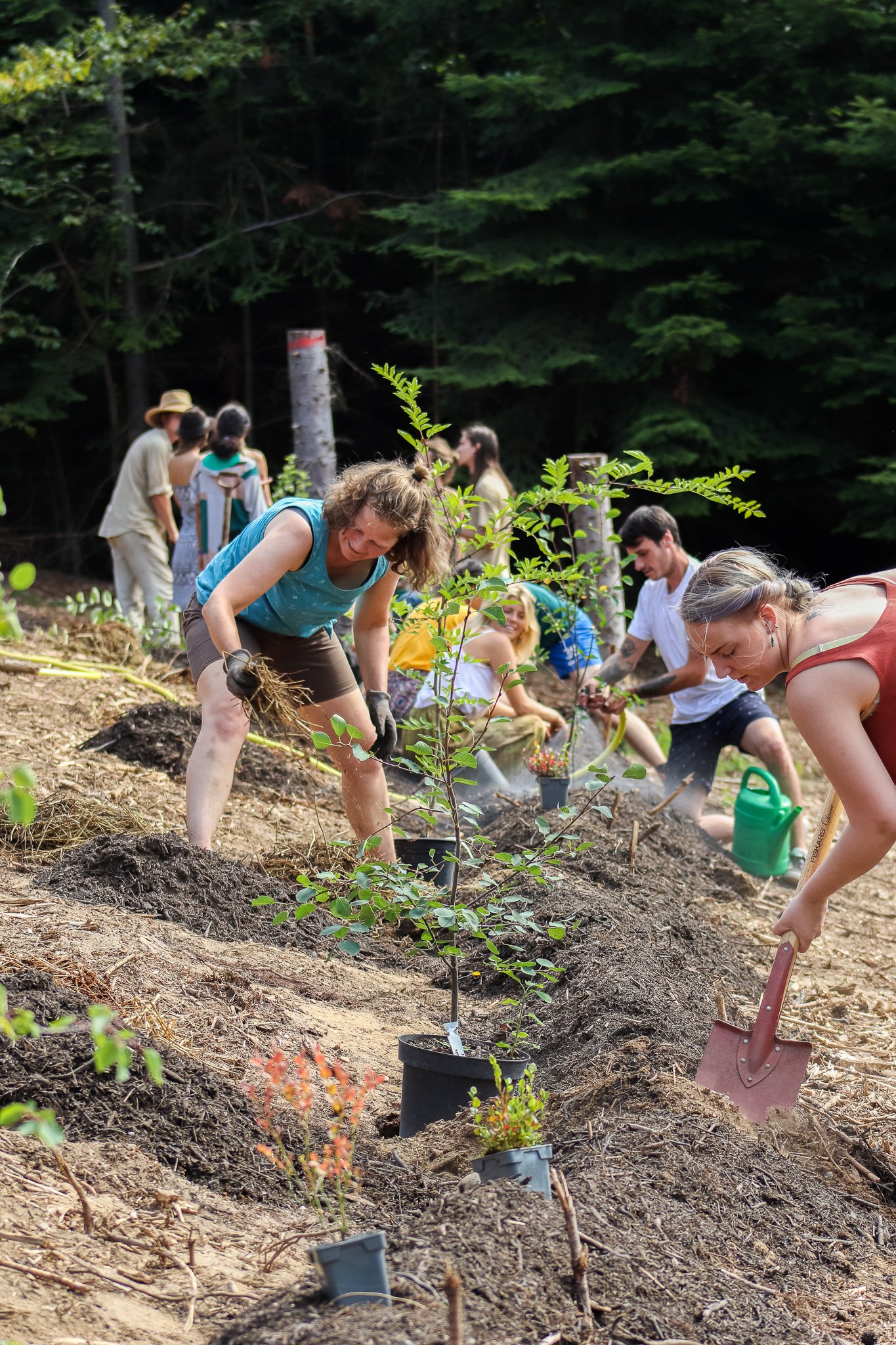Forest Garden
Teacher: Laura Barnkob
Learn hands on how to construct a forest garden based on Permaculture principles at the Positive Trace Festival.
We will build on the already existing forest garden and expand it by: prepare the ground, plant trees, bushes and groundcover plants and make pathways.
With its diverse elements of ground cover plants, bushes and trees the forest garden is a resilient, low-maintenance system and a great example of the permaculture principle ‘Use and value diversity’.
Learn More
-
A forest garden based on permacultural principles is a designed agricultural system that mimics the structure and function of a natural forest. It aims to create a sustainable, self-sufficient ecosystem that produces a variety of foods and other resources.
-
A permaculture garden is a sustainable, eco-friendly gardening system that mimics natural ecosystems. It aims to create a self-sustaining environment where plants, animals, and humans can thrive together. Here’s what defines a permaculture garden:
Diverse Plant Layers: Includes multiple layers of vegetation, from tall trees to ground covers, to maximize space and biodiversity.
Polyculture: Uses a variety of plants together to create a resilient ecosystem, unlike traditional monoculture.
Perennial Plants: Focuses on long-lived plants that provide ongoing yields with minimal maintenance.
Natural Processes: Emulates natural processes like nutrient cycling, water retention, and pest control.
Sustainable Practices: Utilizes composting, mulching, and rainwater harvesting to reduce waste and conserve resources.
Integrated Design: Incorporates beneficial relationships between plants, animals, and the environment for mutual support and productivity.
-
A permaculture forest garden aims to create a balanced, productive ecosystem that requires minimal external inputs and maintenance while providing a diverse array of yields. By closely mimicking natural forests , these gardens can be both ecologically sustainable and highly productive.
This forest garden will be a recreational space and offer value to the local villagers of Vistoft who will pass by on the nearby path as well as to the people living at and visiting Rødegaard - through its beauty and the food it offers.
-
Getting your hands dirty!
Hands-On Learning: Gain practical experience in permaculture principles and techniques. You'll learn about site assessment, soil preparation, plant selection, and sustainable gardening practices.
Community Building: Connect with like-minded individuals who share a passion for sustainability and nature. Work together, share ideas, and build lasting relationships.
Fun and Rewarding Experience: Enjoy the satisfaction of seeing the forest garden grow and flourish. Participate in a meaningful project that benefits both people and the planet.
-
Yes absolutly, you can create a forest garden at home, even in a small backyard or urban setting.
At the end of the festival you will be provided with recommendations for materials from which you can learn more and create a thriving forest garden at home that provides a sustainable source of food, beauty, and habitat for wildlife.
About Laura
In 2015, Laura Barnkob took part in a Permaculture Design Course and since then has been busy putting it into practice. She is, among other things, trained organic farmer from Kalø Landbrugsskole, has lived in a number of permaculture sites and is passionate about creating well-being for us humans and our surroundings. She started the forest garden last year at Rødegaard and has been active during the monthly workdays.
Explore the other Positive Trace Projects
-

Native Seed Collection
The workshop will focus on restoring an acient ecologial funtion of the grassland ecosystem. The dispersal of plant seeds over large distances carried out by large herbivores.
-

Hydrology
The purpose of the project will be to expand on the ecological space from the forest to the fields, by simulating forest clearings, providing food sources for pollinators, as well as to protect the field in case of harsh climate changes.
-

Habitat Creation
Learn how to support and create different habitats for small insects and mammals by imitating natural processes in a manipulated system. We will focus on building dead hedges, inviting species such as hedgehogs, wrens, and solitary bees to move in.
-

Biodynamic Fall Veggie Garden
Learn how to start a fall veggie garden, where you will learn basic growing and compost-making skills based on biodynamic methods. Get ready for a day full of insight, understanding, and hands-on experience.




